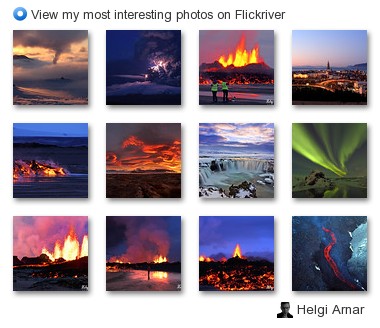Heimasíða Helga Arnars Alfreðssonar
Research interests / RannsóknasviðPHD PROJECT CarbFix - Carbon fixation in basalts The reduction of CO2 emission to the atmosphere is one of the main challenges of this century. Carbon capture and storage is among the solutions to this challenge. Injection of carbonated water, that is when CO2 gas is fully dissolved in water prior to injection into the deep geologic formation, is thought to improve security of the injection site (gas leakage). Furthermore it helps to promote mineral carbonation of reactive host rocks (Gislason et.al., 2010: I.J.G.G.C.). CarbFix (www.carbfix.com) is an international cooperative project between the University of Iceland, Reykjavik Energy, CNRS - Toulouse, and Columbia University, USA, where the goal is to mineralize CO2 in basaltic rocks in Iceland. The CO2 comes from the Hellisheidi Geothermal Power Plant in SW-Iceland. Carbon dioxide will be injected into the ground, fully dissolved in water, where it will circulate through the basalt formations at 500 m depth and react with the rocks, forming carbonates. My research within the CarbFix project has been to characterize the geology and chemistry of the rocks and waters of the injection field prior to the injection (Alfredsson et.al., 2008: Min. Mag.; Alfredsson et.al., 2013: I.J.G.G.C.) and predict what happens during the CO2 injection. Further more, we developed, constructed and tested down-hole geochemical sampling techniques for CO2 rich fluids and tracers (Alfredsson et.al., 2011: Energy Procedia). The 2010 Eyjafjallajökull eruption The influences of the Eyjafjallajökull eruption in 2010 were dramatic, when European air-traffic shut down for several days, causing millions of people stuck and huge expenses for the flight companies. Ash fall over the whole of south Iceland and numerous floods from the crater caused great damage on the fields and constructions around the volcano. The ash properties, including the ash grain size, characteristics, dissolution and surface coatings were studied (Gislason et.al., 2011: P.N.A.S.). Its surface salt coatings contained toxic metals for animals, but also important nutrients for the biosphere. These compounds dissolve easily in humidity, precipitation or surface waters/oceans. Chemical influences on the surrounding surface-waters and -ocean was detectable. These fluxes from the volcanic eruption were studied, both within the vicinity of the volcano, where jökulhlaups (glacial floods) from the crater and ash-contaminated surface waters were sampled (Gislason and Alfredsson, 2010: Elements). In the laboratory, ash-leaching experiments, including flow-through reactors were carried out on pristine ash samples from different phases of the eruption. Release rates of protons, nutrients and pollutants from the ash particles and salt coatings were mapped through time (Alfredsson et.al.,2011: Min. Mag. -conference abstract). Silicon isotopic fractionation during chemical weathering of basalt Weathering of silicate rocks has been found to create a significant feedback to climate changes (e.g. Walker etal., 1981: J.G.R.; Gislason etal., 2009: E.P.S.L.). Thus understanding the weathering processes and its contribution to geological cycles of key elements, like Si on Earth is very important. Stable Si isotopes can be a useful tool in studies involving silicate weathering. It can be used as tracers of weathering processes in groundwaters and rivers. Silicon has three stable isotopes; 28Si, 29Si and 30Si. They are known to show great fractionation during weathering reactions, where light Si isotopes are preferentially retained in secondary minerals, like oxides, clays and other silicon bearing minerals (e.g. Georg etal, 2007: E.P.S.L.). Thus, studies of Si isotope fractionation during a CO2 sequestration in basalt, where the aim is to mineralize the CO2, can be very useful. They can potentially monitor the secondary mineral formations, indicating the progress of carbon sequestration, and perhaps maximize the result of future carbon storage solutions. Analysis of the Si isotope composition were carried out at the Oxford University, in collaboration with prof. Kevin Burton. Hellisheidi groundwater prior to the CO2 injection, among the Eyjafjallajökull eruption samples were studied. |
Personal interests / ÁhugamálMy personal interests are heavily linked with geology, of course. Spending time in the nature, hiking, camping, traveling appeals to me.
Photography is one of my main interests: My photos on flickr: |


